How to Start a Podcast (In 6 Steps)

Whether you’re a professional, a hobbyist, or a marketer, starting a podcast is something you’ve likely thought about. However, knowing where to start in the production process and what tools you’ll need can be a little overwhelming, given the wealth of products on the market to help you.
Fortunately, we’re pretty passionate about podcasts here at SecondLineThemes. We’ve put together a guide to help you create a podcast and hit all the marks from start to finish. This includes audio equipment, production software, a professional Podcast Website and more.
In this article, we’ll cover six important steps you’ll need to start a podcast. We’ll also go over some of the best hosting and website options for your show. Test your mics and let’s dive right in!
Build Your Podcast IQ
While podcasting has been a recognized form for around 15 years, it has recently been enjoying a resurgence in popularity. Just this year, the number of people in the United States who have listened to a podcast passed the 50 percent mark – and the numbers continue to trend upward.
All of this highlights the evergreen nature of podcasts as a medium. This means it may serve as a pretty solid form of additional income for your business or organization at some point. However, the popularity of podcasts does not necessarily ensure success.
There are a few things to keep in mind as you work on a podcast strategy, including:
- Content planning: Your podcast should be broad enough to never run out of content options, yet niche enough to draw in a devoted audience, even if for a super narrow niche. You’ll need to plan your content in advance and be ready with what you want to discuss before turning on the Mic!
- Recording schedules: Running a full production schedule can become demanding, so it’s important to balance your time and resources until you can generate some income.
- Monetization strategies: This can be challenging, although there are lots of resources and excellent guidance available.
- Marketing approach (and engagement with listeners): If you’re going to market your podcast you’ll want to think about whether your podcast needs a website and social media accounts too.
You can use podcasts in a number of strategic ways such as highlighting the work of your organization. With interviews and discussions, you can generate interest through a medium that provides flexibility and portability to listeners.
How to Start a Podcast (In 6 Steps)
Before you switch on the mic and start recording, it’s good practice to determine your podcast niche and style. Planning can vary depending on whether you’re running a panel discussion, interview, narrative fiction, conversational or solo show. Once you’ve locked that in, you can follow the following six steps to your own podcast paradise.
1. Select Your Recording Equipment
While there are ways to take a ‘quick and dirty’ approach to record your podcast, you may be able to afford better equipment than you think. Starting small with the intention of expanding as you grow is one way to approach it. You’ll definitely need at least a decent microphone to start a podcast. Built-in microphones in laptops or smartphones are usually not good enough for podcasting.
An easy way to get started is with an entry-level USB microphone. One option is the Snowball Ice from Blue:
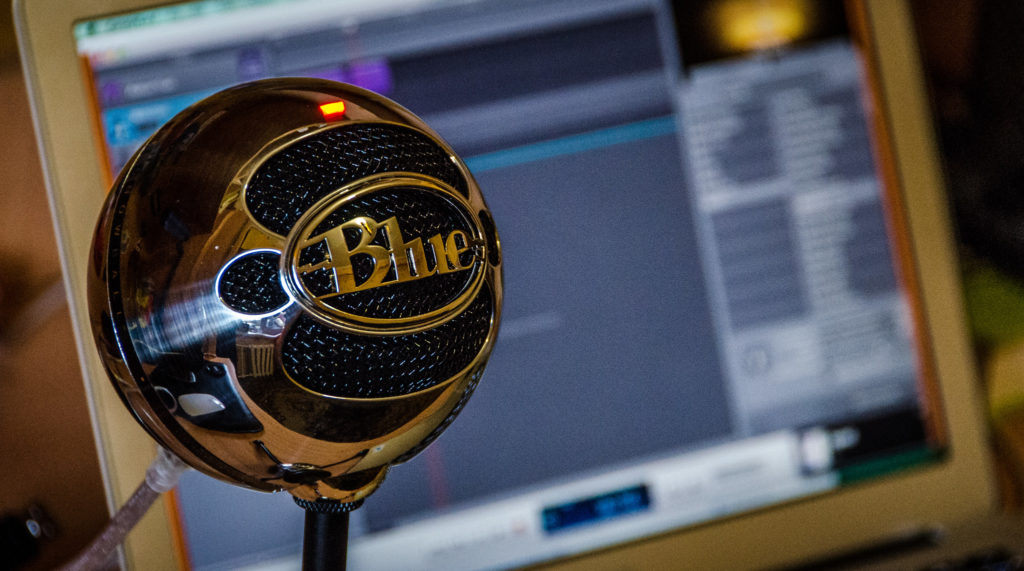
This is an easy-to-use, ‘plug and play’ option for beginners. If you plan to work strictly from a laptop and remain portable, this is a light and fun option. It’s stylish and functional and built to work with your favorite audio editing suite. The Snowball starts at about $49.99, for a budget-friendly option.
If you’re looking for something that can adapt as your podcast grows, you’ll want to look at the Samson Q2U Handheld Dynamic USB microphone. As a dual output option, you can use it both as a USB device or XLR. This means for around $60 you’ll get a microphone that captures excellent sound quality by USB directly to your computer. Additionally, you’ll be able to use the XLR output to connect to soundboards or public audio systems for more advanced recordings or events.
What is needed beyond a microphone?
Another piece of equipment you might want to consider is a pop filter for your microphone. Not all microphones come with this add-on so you might want to consider purchasing one. Pop filters are typically made of a fine fabric or mesh screen that mounts on to the microphone and rests in between the person speaking and the mic:
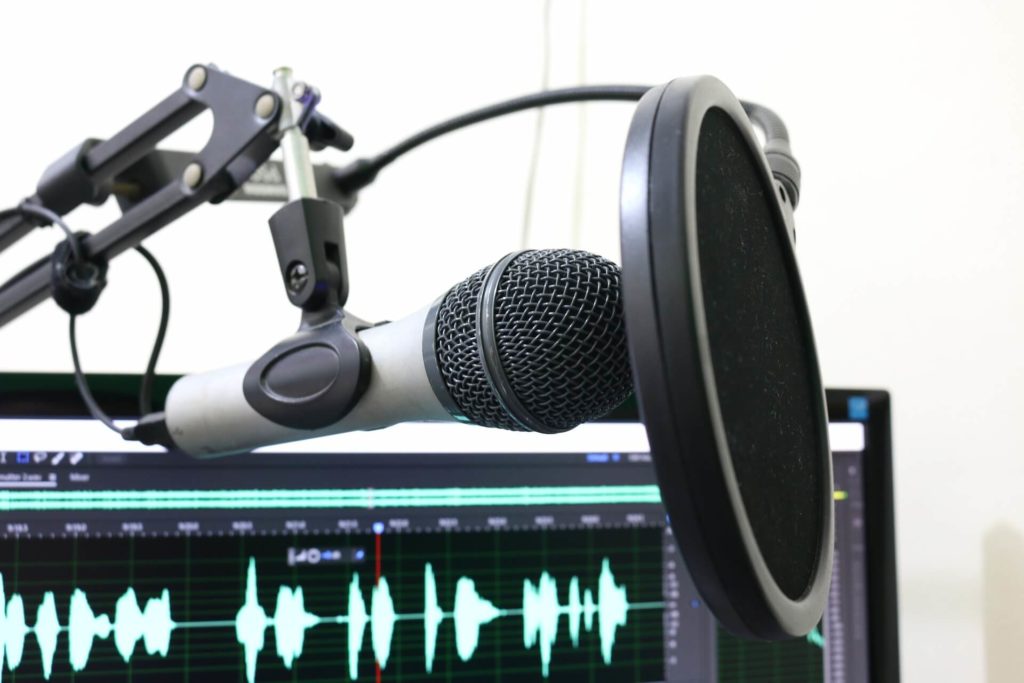
These filters are pretty inexpensive but can make a big difference in the quality of your recording. The goal of a ‘pop stopper’ is to block the sudden rushes of air from plosive sounds (such as “P” and “T”) before they reach your mic. They can spike your volume levels and ruin an otherwise excellent recording. You can pick up a universal pop filter to fit just about any mic for under $10, or even create your own!
These are just a couple of items to consider when it comes to podcasting equipment. You can also get into mixers, interfaces, and portable recorders, but those are not typically needed for beginners in podcasting. We have even more reviews available regarding quality starter microphones and other equipment on our blog.
And what about the recording location?
To round out the equipment list, you might want to think about your recording location. If you have access to a recording studio, you’re in good shape! If not, you might need to get creative about your space. Thinking about this ahead of time can save you a lot of frustration later. You can employ some tricks of the trade and sit in a closet piled with cushions and blankets to dampen outside noise, but that’s not a realistic solution if you have guests or co-hosts.
If you plan on investing in your podcast long-term, you might want to look into how you might provide some sound dampening to a dedicated space for recording. Auralex is one company that provides a range of products from simple foam wall covering to high-end soundproofing panels:
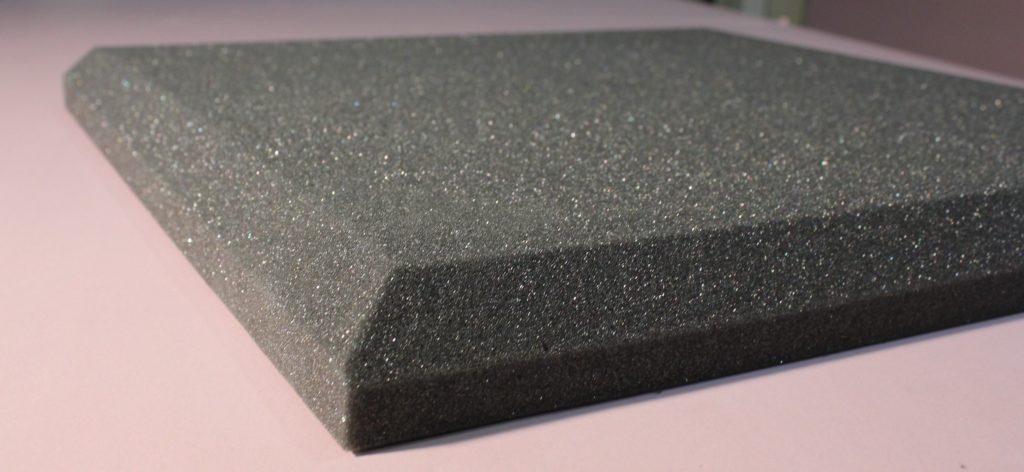
2. Choose an Audio Editing and Production Platform
Once you’ve mastered your recording set up you’ll need to decide how you’ll edit your podcast. There are several software options when it comes to audio editing. Let’s take a look at the free options, first.
If you’re a Mac user, you’ll have access to Garageband for free. This is a perfectly suitable, multitrack audio editor. While it’s marketed toward music production it can get the job done for a podcast as well.
If you’re looking for a cross-platform option, Audacity is a top-notch, open-source, free audio editor:
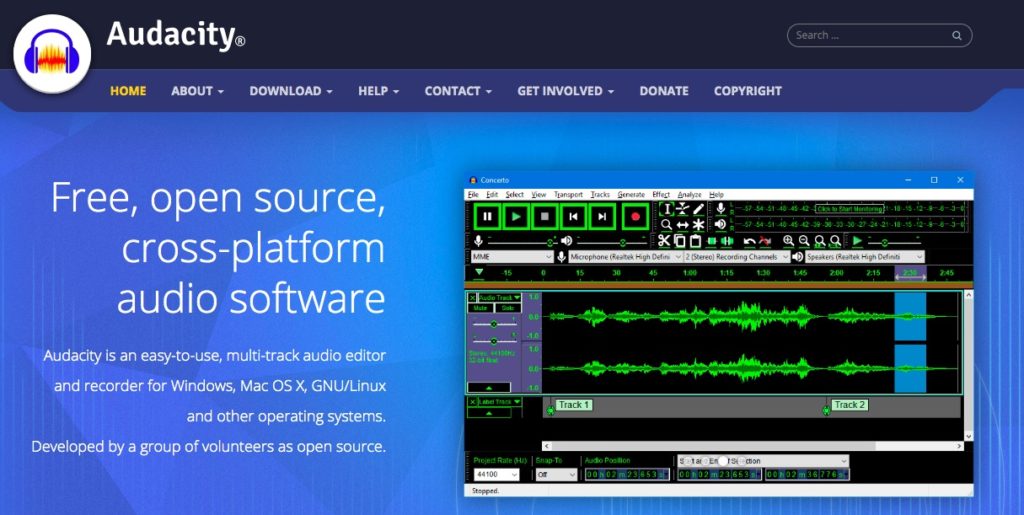
Packed with features such as sound effects, noise reduction, and multiple input options, it may be the only editor you need.
If you are looking for enhanced features and industry-standard professional options, you can check out Adobe Audition. This is a more costly option at $20.99 a month but comes with Adobe support and training materials. You’ll be able to record, mix, edit, and restore audio with wave format or spectral frequency displays.
Considered an industry leader, SoundForge is another high-end option with some lower-cost options available. Their subscription-based license starts at $9.99 a month and comes with all their Pro features and more.
There are companies that offer automated editing and related services, so you can check Alitu as an example.
3. Plan and Schedule Your Content
Even if you’re running a solo-style show, you’ll want to create a plan and schedule for releasing content. This will help you deliver episodes regularly. Listeners are much more likely to become devoted subscribers if they know a new episode is going to be available once a week or on regular days.
There are a number of cloud-based, free tools that are built for collaboration and can help keep you organized. Google Drive, for example, is an all-around workhorse when it comes to file storage and document creation. Personal Google Drive accounts are free and come with 15 GB of storage. If you think you’ll need more, you can explore the Google Drive for Business options:

There are some other podcast-specific tools you might want to check out as well for planning, scheduling guests, share notes, or transcribe your recorded podcast episodes.
Another aspect of podcasting you’ll want to consider is providing a transcript of your show. Not only does this go a long way to meeting certain digital accessibility standards, but it also provides a valuable resource to your listeners who may want to revisit part of your podcast. Some podcast hosts offer transcriptions-as-a-service, and some other companies also offer automatic transcription based on Artificial Intelligence.
4. Choose a Podcast Hosting Service
Another essential step in the podcast process is to choose where you’ll host your show. It’s not recommended to simply upload audio files to your website server. This can take up considerable space and bog down your website.
As you may expect, there are a number of high-quality hosting services available, including:
- Castos: Starting at $19 a month, Castos offers unlimited hosting options and an easy-to-use WordPress integration tool. Castos is also fully compatible with our themes.
- Simplecast: Simplecast offer plans starting at $15 per month ($13.5 if paid annual) for unlimited podcasts and unlimited episodes. Simplecast works perfectly with our Podcast Themes.
- Blubrry: Starting at $12 a month for 100 MB of storage, Blubrry is feature-packed and comes with professional podcast statistics tools. Their PowerPress plugin also works flawlessly with our WordPress themes.
- Buzzsprout: One of the only free options, Buzzsprout offers a zero-cost starter plan for two hours of uploaded audio a month and 90 days of file storage.
- Libsyn: Starting at $5 a month for a 50 MB starter plan, you can also use Libsyn’s free mini-page option to kickstart your podcast’s online presence.
Ultimately, before deciding on a podcast host, you’ll really want to evaluate your growth goals and make sure the plan you go with has room for your future plans.
5. Create Your Podcast Website
Don’t stop after you start a podcast! As we mentioned previously, creating a standalone website for your podcast is a best practice we recommend following. Here at SecondLineThemes, we also put our support behind using WordPress. The open-source Content Management System (CMS) has some of the most flexible and easy-to-use plugins for podcasting.
Additionally, you can style your site specifically for your show using podcast-friendly themes:
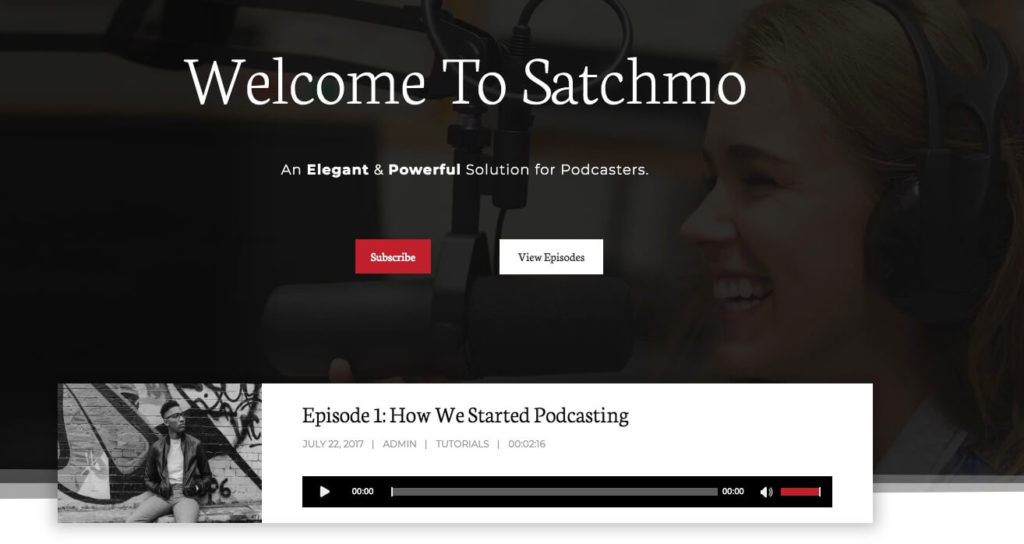
To get started, you can utilize some of our step-by-step guides for exact details on how to launch a podcast website with WordPress. When you combine WordPress with our new podcast import plugin, you’ll be well on your way to creating a high-quality podcast website and central hub for managing your show content online.
6. Share Your Show on Social Media
Once you have your podcast all packed up, you’ll want to start promoting it wherever you can. There’s data outlining the arc of a podcast episode’s life on social media that might be helpful to understand. The research indicates that 90 percent of all active podcast episodes achieve 90 percent of their lifetime downloads in the first 96 hours of their release.
This means promoting heavily within the first few days of release is pretty vital. One of the ways to make a splash is with visual elements. This might seem counter-intuitive to the podcast producer, but it works! In fact, using images is a best practice recommended by BuzzSprout. They suggest creating ‘audiograms’ for promoting your podcasts:
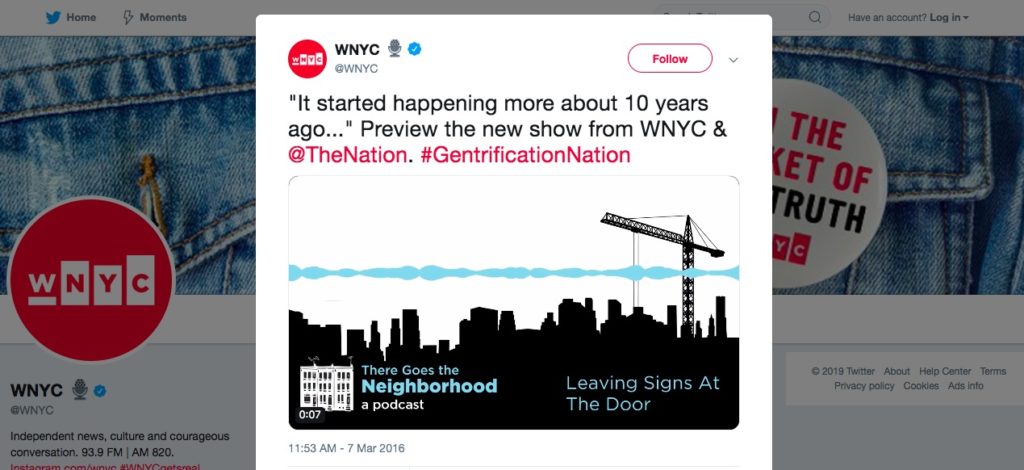
These are still images paired with audio and exported as videos. Video content typically does better on most social media platforms, so an audiogram is one way to maximize on that metric.
There are other tools available for streamlining your social media content as well. If you’re building your podcast website with WordPress, there are several useful plugins that can help you schedule posts and make sure your listeners never miss an update!
Conclusion
Deciding to start a podcast can be a very exciting time. Knowing you have a step-by-step plan in place and resources to support your production can make the whole process fun and productive.
To help strategize the workflow and resources for your new podcast just keep these six steps in mind:
- Choose your gear. (Check out this list of gear recommendations curated by Vurbl)
- Decide which editing software works for you.
- Plan your content.
- Choose a podcast hosting service.
- Build a podcast website.
- Share your show on social media.
However you decide to launch your new audio endeavor, we have the perfect themes for your podcast and lots of excellent podcasting resources from experts in the industry. Check out our themes and solutions!
Image credits: Sergey Galyonkin, Florante Valdez, Trevor Cox
